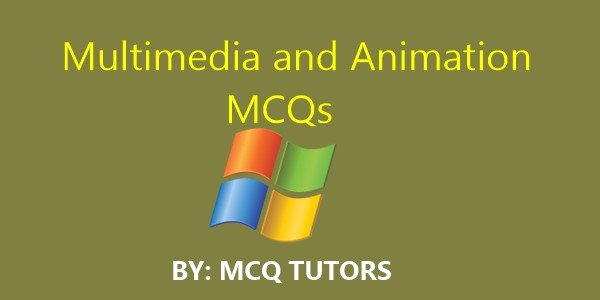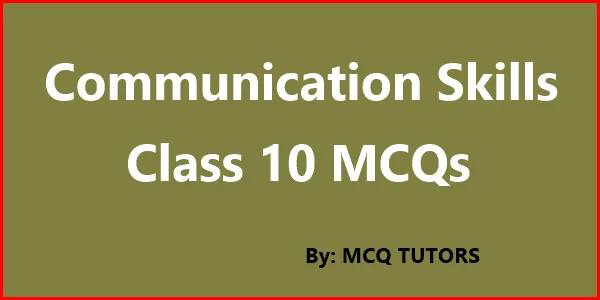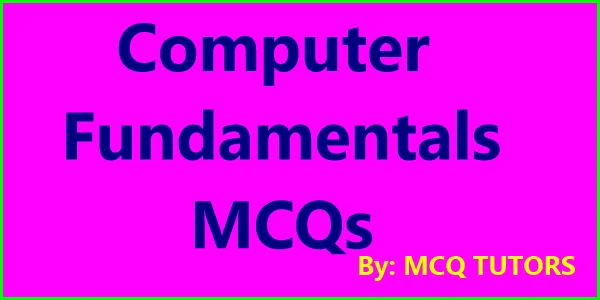Multimedia and Animation MCQ with Answers | Multimedia MCQs for the preparation of academic and competitive exams of IT companies. Animation MCQ questions and answers pdf
Are you currently studying for an exam or assessment that requires you to demonstrate knowledge in multimedia and animation?
If so, then you are likely in search of some helpful multiple-choice questions (MCQs) with answers to help you prepare. In this article, we will provide an overview of what to look for when searching for multimedia and animation MCQs with answers.
Multimedia and Animation MCQ with Answers
1. Which was the first mass communication medium?
a. Newspaper
b. Magazine
c. Television
d. Radio
Answer: A
2. In ___, the Memex was developed by Vannevar Bush.
a. 1935
b. 1945
c. 1955
d. 1965
Answer: B
3. ___ was approved as an international standard for digital video in the year 1993.
a. MPEG-2.2
b. MPEG-1.5
c. MPEG-1
d. MPEG-4
Answer: C
4. ___ media triggers our hearing senses.
a. Auditory
b. Visual
c. Braille
d. None of the above
Answer: D
5. Representation media refers to how the information is represented internally by the computer.
a. True
b. False
Answer: A
6. ___ signal varies continuously over space and/or time.
a. Analog
b. Digital
c. Monolog
d. Multilog
Answer: A
7. The ___ displacement of the oscillating particle from its mean position is known as amplitude.
a. Minimum
b. Maximum
c. Zero
d. Medium
Answer: B
8. Frequency is the number of ___ completed in unit time.
a. Digits
b. Rotations
c. Oscillations
d. Jumps
Answer: C
9. The ___ step towards the digitization of analog signals is discretization.
a. Second
b. Final
c. Fourth
d. First
Answer: D
10. If ___ is increased then discrete samples are also increased.
a. Sampling rate
b. Oscillation rate
c. Sampling frequency
d. Sampling ratio
Answer: A
11. ASCII stands for American Standard Code for ___ Interchange.
a. International
b. Information
c. Internal
d. Index
Answer: B
12. Formatted texts are those which contain not only alphanumeric characters but also some___.
a. Control characters
b. Images
c. Icons
d. Decorative characters
Answer: A
13. HTML stands for HyperText Markup Language.
a. True
b. False
Answer: A
14. Each ___ represents a particular colour.
a. Frame
b. Character
c. Pixel value
d. None of the above
Answer: C
15. A photograph is an analog image and a ___ can convert it into a digital image.
a. Printer
b. Scanner
c. Webcam
d. Camera
Answer: B
16. Sound is a result of ___.
a. Vibration
b. Talking
c. Light
d. Action
Answer: A
17. We can hear the sound if it is within 20 to ___ Hz.
a. 20,000
b. 30,000
c. 40,000
d. 50,000
Answer: A
18. ___ signals are digitized using pulse code modulation.
a. Video
b. Radio
c. Audio
d. Digital
Answer: C
19. Sampling rate is the number of times per second that samples are taken.
a. True
b. False
A
20. CD-DA audio uses a sample rate of 44,100 samples per ___.
a. Second
b. Minute
c. Hour
d. day
Answer: A
21. Digital samples of sound are generated using a synthesizer.
a. Scanner
b. Digitizer
c. Synthesizer
d. Modifier
Answer: C
22. Compression is applied after the transmission of information.
a. True
b. False
Answer: B
23. The ___ is performed at the decoder.
a. Decompression
b. Compression
c. Depression
d. Encoding
Answer: A
24. Lossless compression algorithm is said to be ___.
a. Irreversible
b. Reversible
c. Fixed
d. None of the above
Answer: B
25. Entropy encoding, focuses on how the information is ___.
a. Copied
b. Enabled
c. Encoded
d. Represented
Answer: D
26. The codeword generated using Run-Length encoding consists of two values – the character/bit and the number of occurrences of that character/bit.
a. True
b. False
Answer: A
27. Entropy is the minimum number of ___ needed to represent a symbol.
a. Pixels
b. Bits
c. Signals
d. Characters
Answer: B
28. In differential encoding, the difference between the amplitude values is taken as ___.
a. Zero
b. Signals
c. Codewords
d. Passcodes
Answer: C
29. A ___ tree is a tree having two children.
a. Binary
b. Tertiary
c. Primary
d. Mono
Answer: A
30. In the image function, the ___ of at any coordinates represents intensity.
a. Frequency
b. Size
c. Amplitude
d. Variance
Answer: C
31. When an image has ___ levels, it is referred to as a k-bit image.
a. Blue
b. Red
c. White
d. Gray
Answer: D
32. Bitmap graphics are composed of large dots of the same or different colours.
a. True
b. False
Answer: B
33. The quality of ___ remains unchanged even if the size is increased or decreased.
a. Vector graphics
b. Illustrations
c. Photographs
d. Line images
Answer: A
34. Captured image format is the image format that comes out of an image frame grabber.
a. True
b. False
Answer: A
35. GIF supports up to ___ bits per pixel.
a. 4
b. 6
c. 8
d. 3
Answer: C
36. If the sampling rate is determined by the ___ of the communication channel, then the signal is known as a band-limited signal.
a. Bandwidth
b. Frequency
c. Variance
d. Speed
Answer: A
37. In ___, the difference between the amplitude of successive samples is only encoded.
a. GIF
b. DPCM
c. GSM
d. ADPCM
Answer: B
38. In the DPCM encoder, the register ___ is used to store previous values.
a. C
b. V
c. R
d. S
Answer: C
39. The principle behind ADPCM is to use ___ bits to encode smaller differences and more bits to encode larger differences.
a. Larger
b. Smaller
c. More
d. Fewer
Answer: D
40. In the case of the second version of the ADPCM encoder, the first filter passes the frequency in the range ___.
a. 10 Hz to 2 kHz
b. 20 Hz to 2.5 kHz
c. 50 Hz to 3.5 kHz
d. 15 Hz to 25 kHz
Answer: C
41. The sampling rate for the upper sub-band signal is ___ ksps.
a. 16
b. 17
c. 18
d. 19
Answer: A
42. In the case of adaptive predicting coding, the input speech signal is divided into fixed ___ segments.
a. Size
b. Shape
c. Time
d. Colour
Answer: C
43. Using ___ coding, the bandwidth requirement is reduced to 8 ksps.
a. Adaptive predicting
b. Linear predicting
c. Circular predicting
d. Multilevel predicting
Answer: A
44. When ___ frames are similar then it is known as temporal redundancy.
a. Opposite
b. Parallel
c. Diagonal
d. Adjacent
Answer: D
45. ___ is a primary memory. It is a ___ device where we can read as well as write to it.
a. RAM, memory
b. CPU, Image
c. GPRS, audio
d. RAM, image
Answer: A
46. Macroblock consists of ___ blocks of Y, 1 block of Cb, and 1 block of Cr.
a. 2
b. 4
c. 6
d. 8
Answer: B
47. The parameters of motion vectors are encoded using differential encoding.
a. True
b. False
Answer: B
48. The number of still pictures/frames displayed per ___ is called the frame rate.
a. Second
b. Minute
c. Hour
d. Day
Answer: A
49. Which of these describes the dimensions of video screens and video picture elements.
a. Picture ratio
b. Aspect ratio
c. Video ratio
d. Pixel ratio
Answer: B
50. Secondary memory is a memory where data is stored.
a. True
b. False
Answer: A
Conclusion
Multimedia and Animation are powerful tools to create engaging and meaningful experiences for users. With the help of this article, we hope you have gained an understanding of the different aspects involved in multimedia and animation, such as its history, types, hardware requirements, and software applications.
Thanks for visiting our website, if you like the post on Multimedia and Animation MCQ with Answers and Multimedia MCQs, Please share on social media.
Read More:




